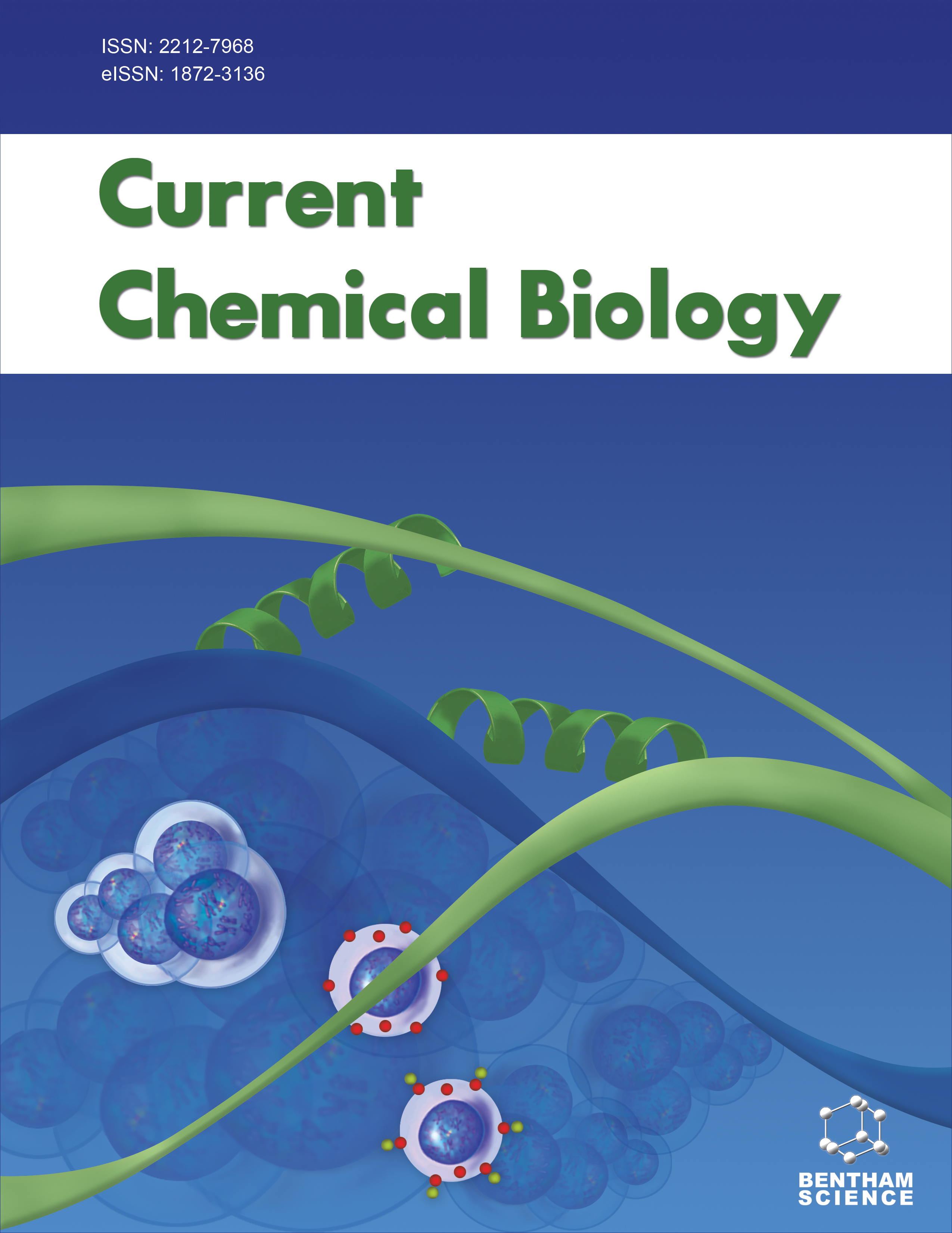- Home
- A-Z Publications
- Current Chemical Biology
- Previous Issues
- Volume 2, Issue 3, 2008
Current Chemical Biology - Volume 2, Issue 3, 2008
Volume 2, Issue 3, 2008
-
-
Modeling the Conformation of Side Chains in Proteins: Approaches, Problems and Possible Developments
More LessSimulation of the correct side chain conformations of amino acid residues is an intriguing issue not only for computational biology, but also for practical outcomes in biotechnology and medicine. This is also a main challenge for molecular simulations, since even in the homology modelling strategy (which uses templates to predict the unknown structure of a protein), the conformation of a side chain generally cannot be easi Read More
-
-
-
Advancements in Predictive In Silico Models for ADME
More LessAuthors: Kamaldeep K. Chohan, Stuart W. Paine and Nigel J. WatersThis comprehensive review describes contemporary computational (in silico) quantitative structure-activity relationship (QSAR) approaches that have been used to elucidate the molecular features that influence the Absorption, Distribution, Metabolism and Elimination (ADME) of drugs. Recent studies have applied 2D and 3D QSAR, pharmacophore approaches and nonlinear techniques (for example: recursive partitioning, neura Read More
-
-
-
Molecular Kinetics and Targeting Within the Nucleus
More LessProtein mobility, chromatin movement and the formation of molecular assemblies in the cell nucleus have, until fairly recently, been viewed in a pseudo-static light, even though the dynamics of other cellular regions have been partly, or wholly understood for a number of years. The new science that has recently emerged on nuclear kinetics reveals a nucleus that has mobile proteins, dynamic intra-nuclear compartments Read More
-
-
-
Enzymes with Phosphotriesterase and Lactonase Activities in Archaea
More LessAuthors: Luigia Merone, Luigi Mandrich, Mose Rossi and Giuseppe MancoOrganophosphates (OPs) are a class of synthetic compounds used both as pesticides and nerve agents. They are chemically phosphoesters and biologically potent irreversible inhibitors of serine esterases, particularly acetylcholinesterase (ACh), the key enzyme of the nervous system. Enzymes able to degrade these compounds are at the moment the focus of several research studies in the environmental decontamina Read More
-
-
-
N-Terminal Specific Fluorescence Labeling and its Use in Local Structure Analysis of Proteins (Invited Review)
More LessAuthors: Huimin Ma, Wen Shi, Suying Dong, Ke Wang, Jia Jia and Suming ChenThe function of a protein correlates closely with its structure; even partial structural disorder/misfolding may lead to various diseases such as Parkinson's disease. Therefore, analysis of the local structure of a protein (e.g., detecting conformation changes during folding/unfolding, and obtaining the information on local polarity, viscosity, etc.) is of great importance for proteomics studies, and in this respect fluorescence Read More
-
-
-
Relationship Between Metal Transcription Factor-1 and Zinc in Resistance to Metals Producing Free Radicals
More LessTrace elements as Cu (copper), Fe (iron), and Zn (zinc) can be toxic when their distribution is not carefully regulated, and also their inappropriate binding may compromise cellular function and homeostatic mechanisms. Metal transcription factor-1 (MTF-1), a multiple Zn finger protein, activates metal response element-driven (reporter) gene expression, in a similar way as it happens in metallothionein-1 and -2 (MT-1 an Read More
-
-
-
Single Molecule Studies in Chemical Biology and Nanosciences
More LessModern ultra-sensitive instrumental skill and expertise on surface modification of single biological molecules have sharpened the capabilities of scientists to address important current problems and explore new frontiers in many scientific disciplines including chemistry, molecular biology, molecular medicine and nano-structured materials. Development in single molecule studies (SMS) and manipulation (SMM) in the past t Read More
-
-
-
Chemical Biology: Past, Present and Future
More LessChemical biology (CB) is a scientific discipline spanning the fields of chemistry and biology involving the application of chemical techniques and tools, often natural products or small chemical compounds produced through synthetic chemistry, to the study and manipulation of biological systems. CB is providing new tools for deciphering protein modification and activity. Designer small molecules as probes of protein and c Read More
-
-
-
Synthesis, Characterisation, Anti-Microbial Activity and Docking Studies of Novel Dispiro- Oxindolopyrrolidines
More LessA facile synthesis and characterisation of novel dispiro-oxindolopyrrolidines is delineated. The results of the anti-microbial studies of novel dispiro-oxindolopyrrolidines are correlated with the docking calculations performed on protein S12 from 30S ribosomal subunit.
-
Volumes & issues
Most Read This Month
Article
content/journals/ccb
Journal
10
5
false
en


